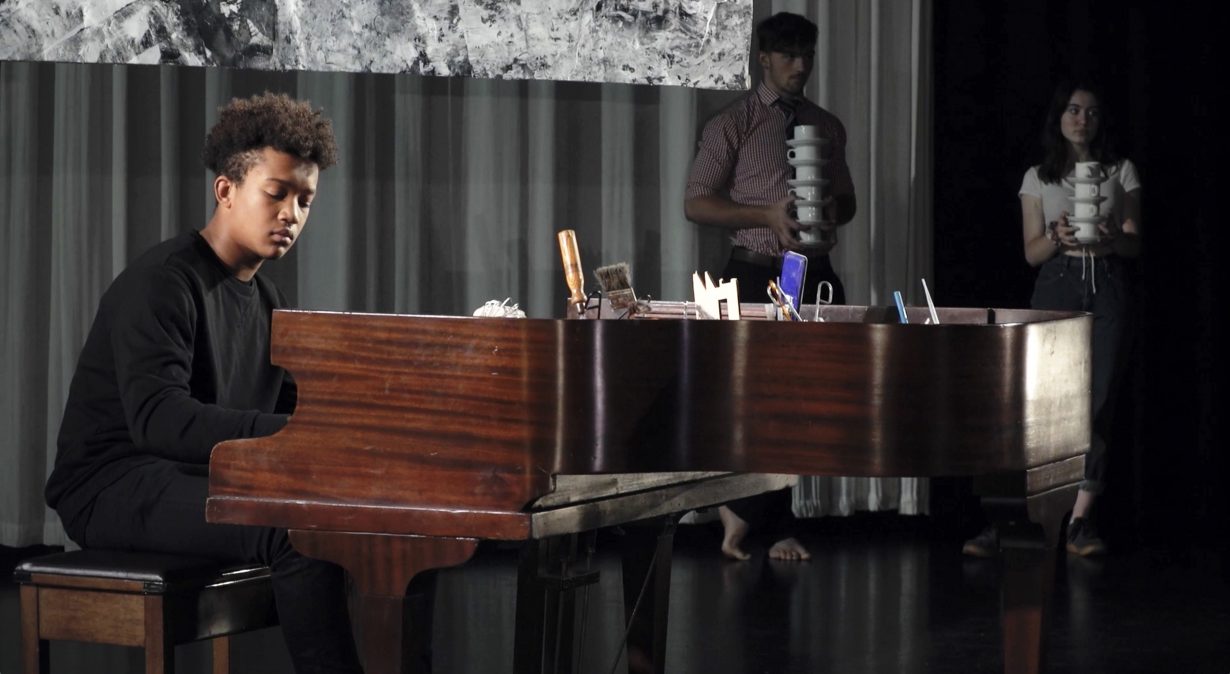Johanna Billing’s show at Whitechapel Gallery is an accidental ode to inequality
In the summer of 1952, John Cage made a brief announcement at Black Mountain College: later that evening in the dining hall, there was to be a performance; the participants had no script and the choreography was unplanned beyond merely inviting a number of different specialities – music, dance, painting and simple talking – to share the space. This event, which would later be titled Theatre Piece no.1, is now widely regarded as the first ever happening, an early antecedent to performance art.
The plan, likely hatched that same day with musician David Tudor, was characteristically Cage. Everyone was given a slip of paper indicating when they should begin and end, and no other instructions. The chaos that would unfold was an affirmation of everything chance allows: freedom, experimentation, discovery. It’s process over object, collaboration over authorship. Set in an art school, the performance was a statement of intent, an attempt to foster a different kind of learning.
Some 70 years later, artist Johanna Billing has returned to this history, addressing themes of exchange, experimentation and the politics of education through a restaging of Cage’s performance. Each Moment Presents What Happens, on show at Whitechapel Gallery through 14 January 2024, harks back to the original event at Black Mountain College, this time working with school children instead of art students. Many subtle details in the resulting film pay direct tribute to accounts of Theatre Piece no.1: just like with the original performance, much of the action happens in the dining hall, and once again, a dog excitedly stumbles through the crowd of performers. The rhythm of the school day provides a backdrop to the contemporary restaging, as the bustle of kids arriving and leaving school loosely structures the video. The video shifts between scenes of the kids playing with instruments inside a theatre hall, reading information about Cage to other students who only half listen during lunch time, and playing on the school grounds before they return to the performance.

Why restage this work now? The text accompanying the exhibition ‘asks what’s at stake within a climate of cuts’ and argues for the ‘necessity of cultivating creative learning and collective action within schools’. The project was commissioned by Bristol Grammar School, a fee-paying private school, to commemorate the opening of the glossy new performance theatre on their grounds. Students from this school, and schools around Bristol, feature as the participants; they use expensive equipment, including professional-looking cameras, a dolly track and a grand piano. Despite the wider narrative around pedagogy and austerity in the work, it is curiously silent about the narrowness of its own context.
Private education fosters inequality in society, exacerbating the gap between the rich and poor by hoarding access to resources and opportunities. The question at hand is about uneven distribution of funding, but also the stratification of young people at a formative time in their lives along class lines. Middle- and upper-class students are siloed off into networks of privilege, which will have a ripple effect across their entire personal and professional lives. This fact is incredibly pronounced in the UK, where some 65 percent of the current cabinet attended private school, compared with just 7 percent of the general population. These institutions are a perverse symbol and driving force of deep-seated problems in the country.
While funding to the arts is under attack in the UK, art history remains on private school curriculums. Privileged students will have the option to study the arts at prestigious universities; as they will then ascend the ranks of finance and politics, they may even become patrons and sit on the boards of museums, bolstered by fond memories which are increasingly only available for those who can afford them. Each Moment Presents What Happens is not incompatible with any of this; if anything, it’s a HD vision of Britain’s future. Addressing inequality with clarity is necessary if the subtext of education, experimentation and engagement is to be a meaningful aspect of the artwork beyond a thin veneer of social purpose.

Billing promises her project gives students agency and provides an opportunity for self-expression. However, in this context of co-option and assimilation, the ways in which artmaking and education flow toward the centre, and the specifics of the artist’s intention or the content of their ideas fade into the background. As the students function both as the participants and context of the work, the content of the artwork is inextricably tied to its source. If we stripped away this context, the work could be read as an endearing but trite exploration of poetic reflections on the everyday that risks being modest, safe, familiar and boring. Asserting Billing’s claim to purpose simply doesn’t work – the production of Each Moment Presents What Happens profoundly undermines its premise and politics.
As inequality continues to soar, as art increasingly becomes a preserve of the wealthy, it is not enough to continue with the charade. Of course, it is preferable for an artistic commission marking a new building to be more interesting than the kind of twee formalist sculpture that often marks such occasions. But the notion that a well-meaning project might counter a rigged system is commonplace in contemporary art, a kind of myth made possible through vague verbiage – to ‘raise important questions’, to ‘highlight’, to ‘ask what is at stake’. There is always a risk with a critique which is too broad that it becomes vague hand wringing, and everyone involved can evade responsibility, shrug and assure us they wish it were different.
Chris Hayes is an Irish writer based in London.
